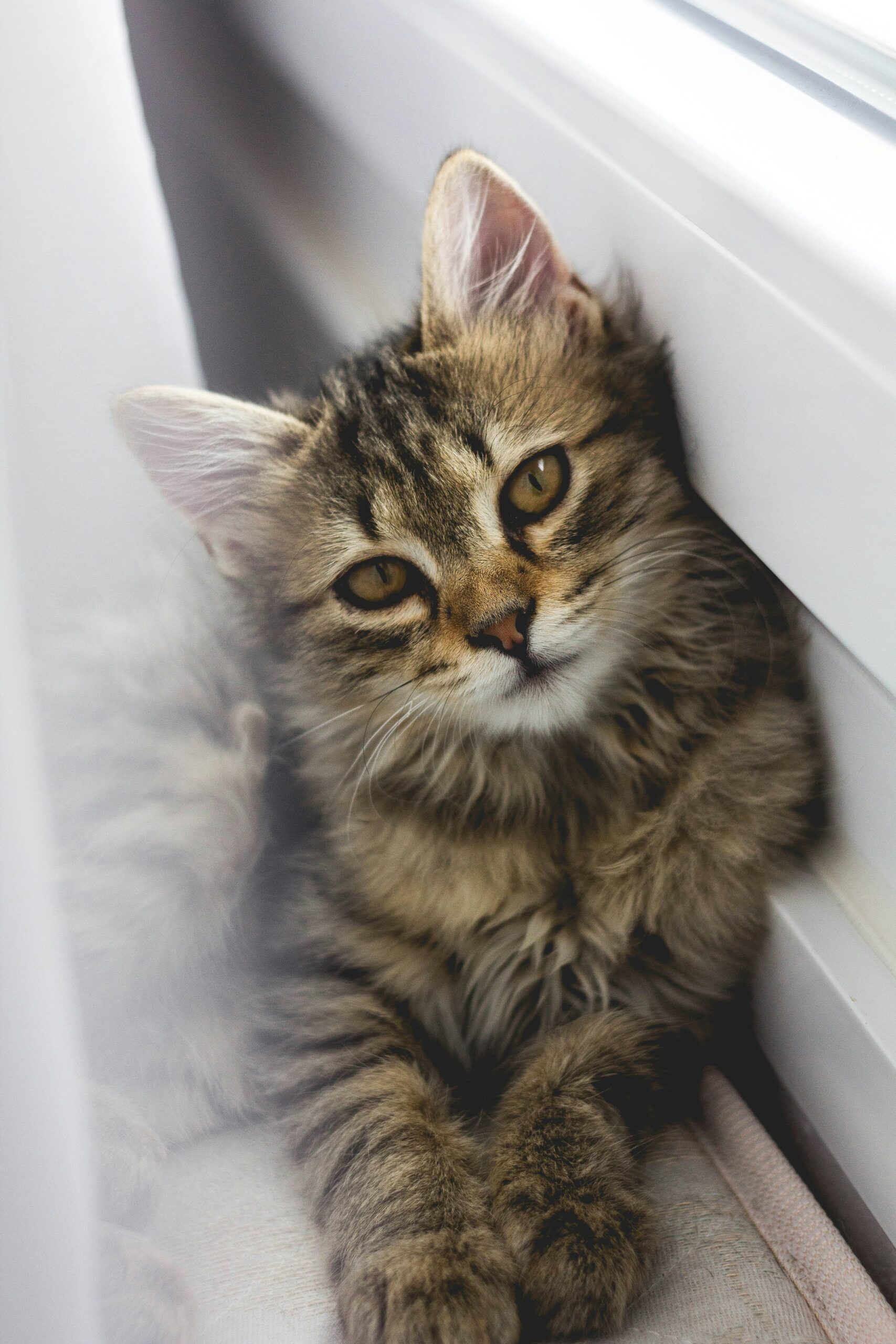If your cat is peeing blood, it can be alarming and distressing, sending pet owners into a state of worry. Understanding the underlying causes of this issue is crucial for timely intervention and effective treatment. Blood in cat urine can indicate a range of health problems, from urinary tract infections to more severe conditions. By recognizing the signs and seeking appropriate care, you can help your feline friend regain its health and comfort. In this post, we will explore the various causes and treatments for this concerning symptom, ensuring you have the knowledge to act swiftly.
Understanding the Problem of Blood in Cat Urine
When your cat is peeing blood, it can be alarming and concerning. This condition, known as hematuria, signals an underlying issue that requires attention. Understanding the potential reasons behind this problem can help you respond appropriately.
Key Facts about Blood in Cat Urine:
- Color Indicators: Blood can appear as small specks or cause the urine to turn bright red, brown, or pink, depending on the severity.
- Possible Causes:
- Infections: Urinary tract infections (UTIs) can irritate the bladder and kidneys, resulting in blood.
- Stones or Crystals: Urinary stones can cause damage to the bladder lining.
- Trauma: Injury to the urinary tract, often due to falls or accidents.
- Tumors: Abnormal growths in the urinary tract that may bleed.
Recognizing that your cat is peeing blood is crucial. When responding to this situation, consider the following:
- Observation: Monitor your cat for additional symptoms like frequency of urination or straining.
- Consultation: If the issue persists, seek veterinary care immediately to prevent further complications.
In conclusion, if your cat is peeing blood, it indicates a serious health concern that shouldn’t be ignored. Prompt action is essential for the wellbeing of your feline friend.
Common Causes of Blood in Cat Urine
If you notice that your cat is peeing blood, it’s crucial to understand the possible underlying causes. Several conditions can lead to this concerning symptom, and identifying them timely can aid in effective treatment. Here are some common causes:
Urinary Tract Infection (UTI): Bacterial infections can irritate your cat’s bladder, leading to blood in the urine.
Bladder Stones: These mineral formations can cause irritation and bleeding in the urinary tract.
Injury: Trauma to the urinary system from accidents or fights can result in bloody urine.
Feline Idiopathic Cystitis: This mysterious inflammation of the bladder often shows signs of blood without clear causes.
Tumors or Cancers: Growths in the urinary tract can bleed and result in a cat peeing blood.
Coagulation Disorders: Conditions that affect the blood’s ability to clot may cause blood in the urine.
Comparison of Causes
| Cause | Age Group | Severity |
|---|---|---|
| Urinary Tract Infection | Any | Mild to Moderate |
| Bladder Stones | Middle-aged | Moderate to Severe |
| Injury | Any | Severe |
| Feline Idiopathic Cystitis | Young | Moderate |
| Tumors/Cancers | Older | Severe |
| Coagulation Disorders | Any | Severe |
Being aware of these causes helps inform your decisions when your cat is peeing blood, and it underscores the importance of seeking veterinary care promptly.
Signs and Symptoms to Watch For
If your cat is peeing blood, it’s crucial to recognize the associated signs and symptoms early on. Being observant can make a significant difference in your cat’s health. Look out for the following indications:
- Presence of Blood in Urine: This is the most notable sign. You may notice pink or red tinges in the urine or even blood clots.
- Frequent Urination: If your cat seems to visit the litter box more often than usual, it could signal discomfort or irritation.
- Straining to Urinate: Watch for signs of your cat straining or taking a long time to urinate, which may indicate a blockage or pain.
- Crying or Meowing While Urinating: Uncharacteristic vocalizations during urination can indicate distress, prompting further investigation.
- Change in Litter Box Habits: If your cat starts urinating outside the litter box, it may be a sign that they associate the box with pain.
If your cat displays any of these symptoms in conjunction with the fact that your cat is peeing blood, it’s essential to consult a veterinarian promptly for further evaluation and treatment.
When to Seek Veterinary Care
If you notice that your cat is peeing blood, it’s vital to act promptly. Blood in urine can indicate serious health issues requiring immediate attention. Here are some key signs that necessitate a visit to the veterinarian:
- Persistent Symptoms: If your cat is peeing blood consistently over more than one day.
- Accompanying Symptoms: Look for signs like vomiting, lethargy, loss of appetite, or difficulty urinating.
- Behavioral Changes: Increased vocalization or hiding behavior can indicate pain or distress.
- Age and Health History: Very young, elderly cats, or those with pre-existing conditions may need immediate care.
Quick Comparison Table
| Situation | Action |
|---|---|
| Single occurrence | Monitor closely |
| Repeated symptoms | Contact vet immediately |
| Additional distress signs | Urgent veterinary care needed |
| Older or unwell cat | Immediate vet visit required |
Remember, timely veterinary care can significantly affect your cat’s recovery and overall health. If your cat is peeing blood, don’t hesitate to seek professional help.
Diagnostic Tests for Cats with Blood in Urine
When your cat is peeíng blood, it’s crucial to understand the underlying causes, which may require a series of diagnostic tests. Determining the reason behind this alarming symptom helps target effective treatment. Here are some common diagnostic tools:
Urinalysis: This test examines urine for blood, crystals, bacteria, and other abnormalities. It provides immediate insights into your cat’s urinary health.
Blood Tests: These tests assess overall organ function and check for underlying health issues, such as kidney disease or infections, that could lead to blood in the urine.
Imaging (X-rays or Ultrasound): Visual tools allow veterinarians to identify urinary tract obstructions, stones, or tumors that might cause bleeding.
Cystoscopy: In some cases, this minimally invasive procedure uses a camera to examine the bladder and urethra directly.
By utilizing these diagnostic tests, veterinarians can accurately determine why your cat is peeíng blood and develop an appropriate treatment plan. Quick action is key, so don’t hesitate to seek veterinary care when faced with this unsettling situation.
Potential Health Conditions Linked to Blood in Urine
When a cat is peeing blood, it can signal various underlying health conditions. Understanding these conditions is essential for timely interventions. Here are some potential health issues associated with blood in urine:
- Urinary Tract Infection (UTI): A common cause, often accompanied by frequent urination and discomfort.
- Bladder Stones: These can irritate the bladder lining, leading to bleeding and pain during urination.
- Feline Idiopathic Cystitis (FIC): This condition involves inflammation of the bladder without an identifiable cause, causing blood and discomfort.
- Kidney Disease: Both acute and chronic kidney issues can result in hematuria (blood in urine).
- Tumors: Both benign and malignant tumors in the urinary tract can cause bleeding.
| Condition | Symptoms | Urgency |
|---|---|---|
| UTI | Frequent urination, straining | Moderate |
| Bladder Stones | Painful urination, possible lethargy | High |
| FIC | Sudden onset of blood, frequent urination | Moderate |
| Kidney Disease | Vomiting, weight loss, increased thirst | High |
| Tumors | Blood in urine, weight loss | Very High |
Recognizing these conditions early can greatly improve your cat’s prognosis. If your cat is peeing blood, consult your veterinarian immediately for a proper diagnosis and treatment plan.
Treatment Options for Cats Peeing Blood
When your cat is peeing blood, it’s crucial to address the underlying issue promptly. Treatment varies depending on the cause, but here are common options:
Medications:
- Antibiotics for urinary tract infections.
- Pain relief and anti-inflammatory medications.
Surgery:
- Necessary in cases of bladder stones or tumors.
Dietary Changes:
- Switching to a special diet can help dissolve certain types of stones and maintain urinary health.
Hydration:
- Ensuring your cat drinks enough water is vital. Consider wet food or water fountains to encourage hydration.
Litter Box Management:
- Keep the litter box clean and easily accessible, as this can reduce stress on your cat.
Regular follow-ups with your veterinarian will help monitor your cat’s recovery. Remember, a cat is peeing blood can indicate serious health issues, so never hesitate to seek professional help. Early intervention often leads to better outcomes.
Home Care Tips for Your Cat
If your cat is peeing blood, providing proper home care can significantly enhance their comfort and recovery. Here are some essential tips to consider:
Ensure Hydration: Make sure your cat drinks plenty of water. This can help flush out toxins and dilute urine, reducing irritation.
Monitor Food Intake: Offer a high-quality diet that supports urinary health. Consult your vet to find suitable food options.
Create a Stress-Free Environment: Stress can exacerbate urinary issues. Provide a calm, quiet space for your cat to reduce anxiety.
Maintain Litter Box Cleanliness: Keep the litter box clean to encourage your cat to use it. Add an extra box if your cat feels cramped.
Observe Symptoms: Keep a close eye on your cat’s behavior. Note any changes in appetite, activity levels, or additional signs.
Regular Vet Check-ups: Schedule follow-up appointments with your veterinarian to monitor your cat’s condition and adapt home care as needed.
By implementing these home care tips, you can support your cat’s recovery if they are experiencing a situation where the cat is peeing blood. Always consult your veterinarian for tailored advice.
Prevention Strategies to Reduce Risk
Preventing your cat from experiencing the distressing situation where a cat is peeing blood is crucial for both their health and your peace of mind. Here are effective strategies to help reduce the risk:
- Hydration: Ensure your cat drinks enough water daily. This helps dilute urine and flushes out potential irritants.
- Diet Quality: Feed high-quality, nutritionally balanced cat food. Low-quality ingredients can lead to urinary tract issues.
- Regular Vet Visits: Schedule routine check-ups to detect problems early and keep vaccinations up to date.
- Litter Box Maintenance: Keep the litter box clean and odor-free. Cats may avoid using a dirty box, leading to stress and urinary issues.
- Stress Reduction: Create a calm environment. Stress can trigger behavioral changes that may contribute to urinary problems.
- Monitor Weight: Maintain a healthy weight for your cat, as obesity can predispose them to urinary tract diseases.
By implementing these strategies, you can significantly lower the chances of your cat peeing blood and ensure a happier, healthier feline companion.
FAQs About Cats and Blood in Urine
When your cat is peeing blood, it raises many questions. Here are some common inquiries:
What should I do if my cat is pee-ing blood?
Immediately consult your veterinarian. Blood in your cat’s urine can signal serious health issues.What are the usual causes of blood in cat urine?
Common causes include urinary tract infections (UTIs), bladder stones, or severe kidney problems.Is this condition common in certain breeds?
Certain breeds may be more predisposed to urinary problems. Always check with your vet about your cat’s specific breed risks.How can I help my cat?
Provide a stress-free environment, ensure access to fresh water, and maintain a healthy diet.Can blood in the urine resolve on its own?
In rare cases, it may. However, professional veterinary assessment is essential to rule out serious conditions.
Understanding that a cat is peeing blood requires prompt attention can make a difference in your pet’s health. Prioritize regular vet check-ups to monitor your cat’s urinary health.
Frequently Asked Questions
What are the potential causes of blood in a cat’s urine?
Blood in a cat’s urine, known as hematuria, can be caused by various medical conditions. Some common causes include urinary tract infections (UTIs), bladder stones, or crystals, which can irritate the urinary lining. Other potential causes are inflammation of the bladder (cystitis), certain cancers, and injuries to the urinary tract. It’s essential to consult a veterinarian for proper diagnosis and treatment, as the underlying causes can vary significantly.
How should I respond if I notice my cat is peeing blood?
If you notice your cat is peeing blood, it is crucial to seek veterinary care immediately. Blood in the urine can indicate a serious condition that requires prompt attention. Your veterinarian will likely perform a physical examination, run tests such as a urinalysis or ultrasound, and assess your cat’s overall health. Early intervention can be key to addressing any underlying issues effectively and preventing complications.
What treatments are available for a cat with blood in its urine?
Treatment for a cat peeing blood will depend on the underlying cause identified by the veterinarian. Common treatments may include antibiotics for urinary tract infections, surgery to remove bladder stones or tumors, and medications to reduce inflammation. Your vet may also recommend dietary changes or increased water intake to help dissolve crystals and prevent future occurrences. It’s important to follow your vet’s recommendations closely to ensure successful recovery.
Can dietary changes help prevent blood in my cat’s urine?
Yes, dietary changes can play a significant role in preventing blood in a cat’s urine, particularly if the underlying causes are related to urinary crystals or stones. Feeding your cat a balanced diet specifically formulated to promote urinary health can help dissolve existing crystals and prevent new ones from forming. Additionally, ensuring your cat has constant access to fresh water encourages hydration, which is beneficial in diluting the urine and reducing the risk of urinary issues.



